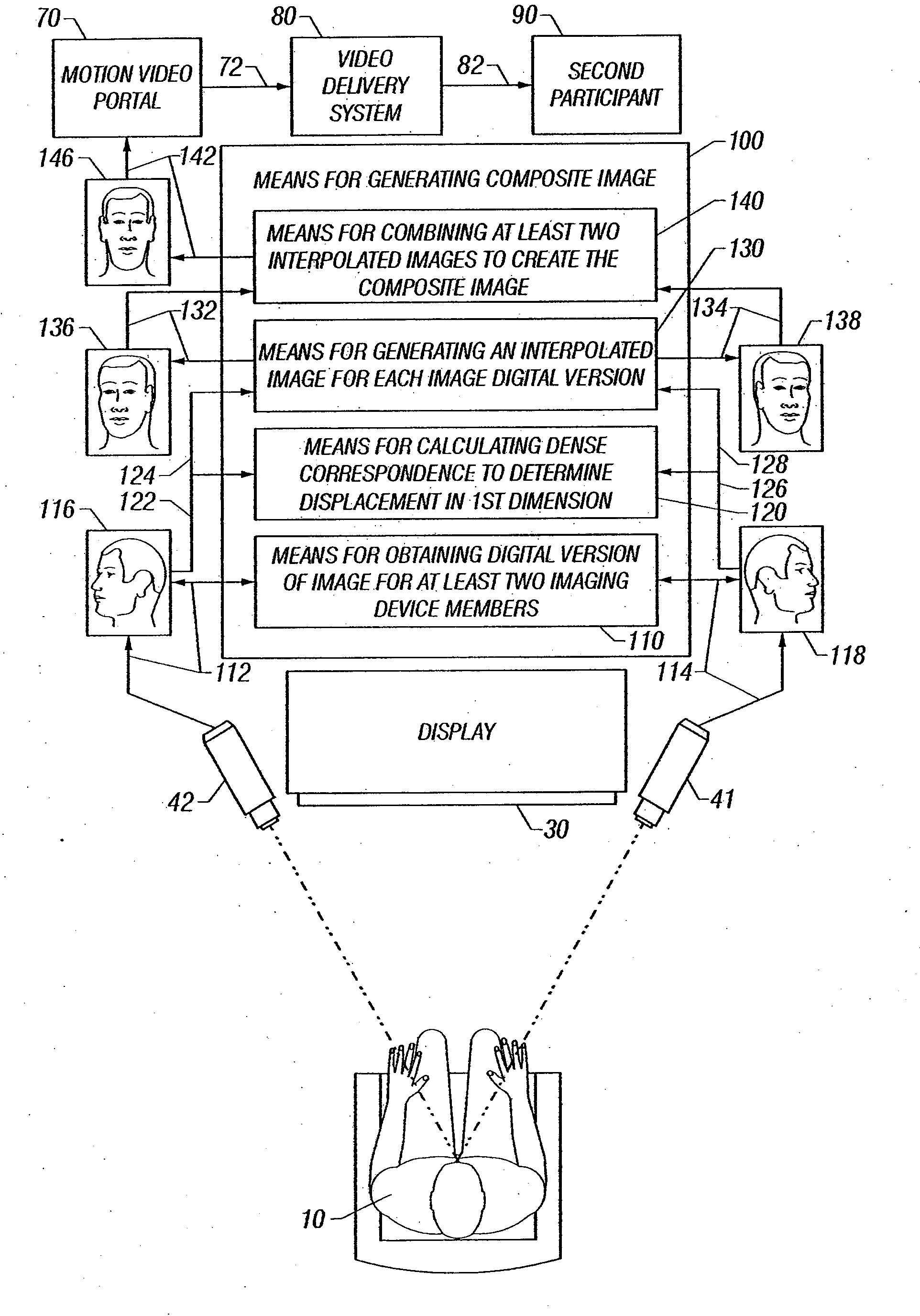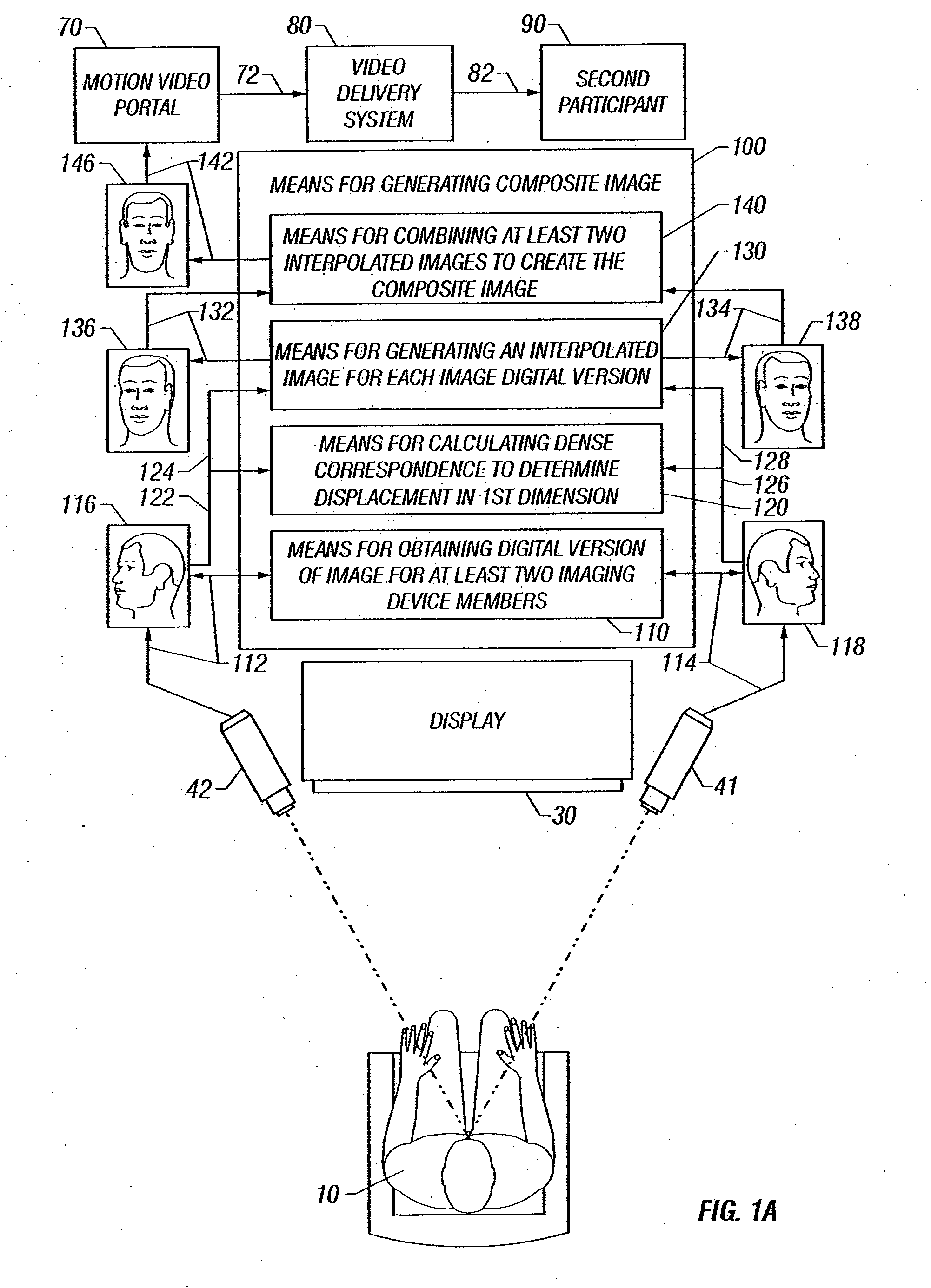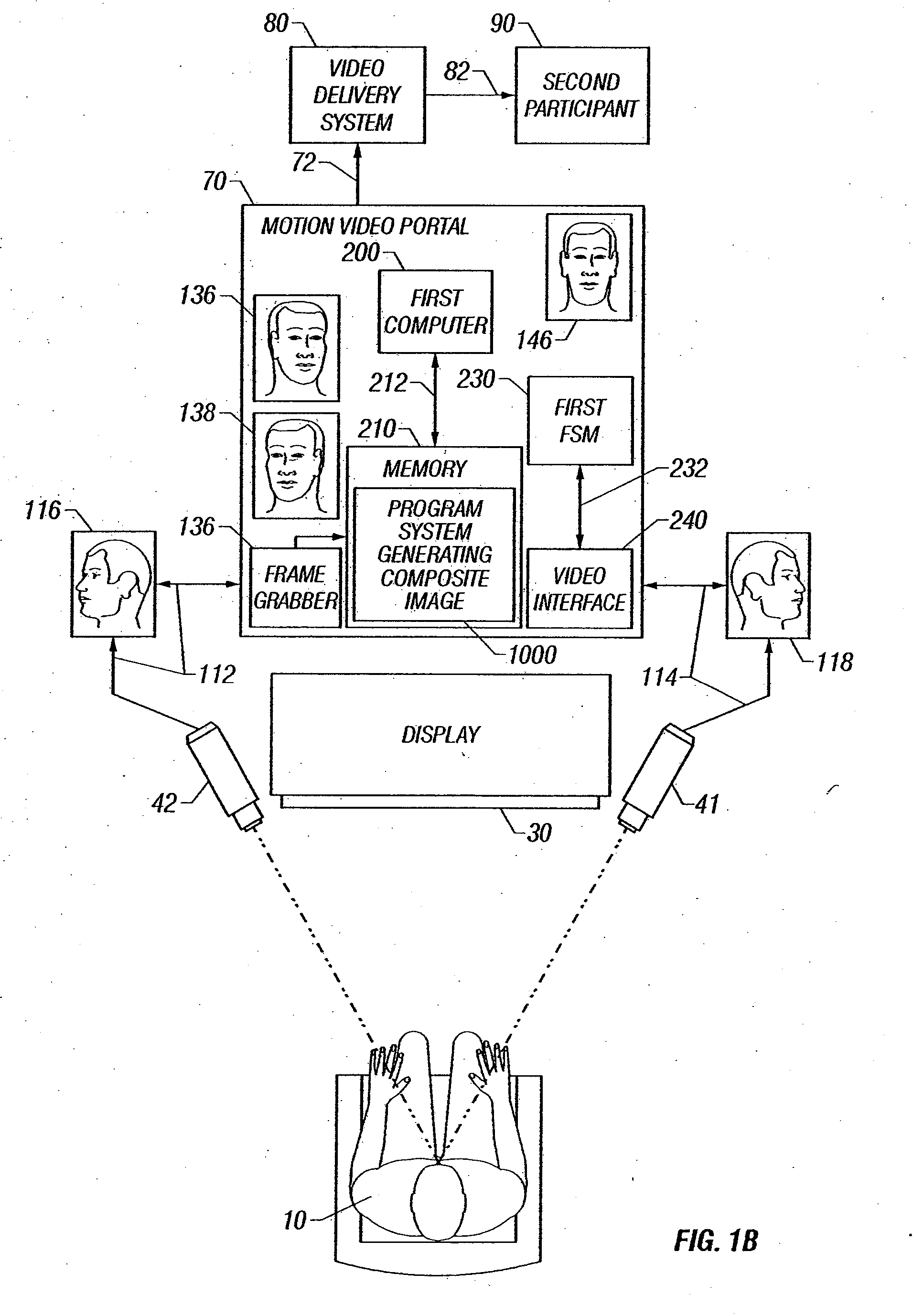Method of Maintaining Eye Contact in Video Conferencing Using View Morphing
a video conferencing and eye contact technology, applied in the field of video conferencing, can solve the problems of distracting the local participant, unsatisfactory user experience, and bulky devices both aesthetically and physically cumbersome, and achieve the effect of enhancing the eye contact sens
- Summary
- Abstract
- Description
- Claims
- Application Information
AI Technical Summary
Benefits of technology
Problems solved by technology
Method used
Image
Examples
Embodiment Construction
[0057]FIG. 1A shows a simplified block diagram overview of the invention, including local participant 10, video display 30, pair of imaging devices 41 and 42, means for generating composite image 100, motion video portal 70, video delivery system 80 and second participant 90.
[0058] Means 100 for generating composite image 146 is communicatively coupled 114 and 112 with at least two imaging device collection members 41 and 42, respectively. Means 100 regularly receives an image 118 and 116 from each of the at least two imaging device collection members 41 and 42, respectively, to provide a synchronized collection of images based upon observations of at least the local participant's head 10 by the imaging devices.
[0059] Means 100 for generating composite image 146 is communicatively coupled 142 to motion video portal 70, providing a succession of composite images 146, each based upon at least synchronized image collection 116 and 118 to 72 video delivery system 80.
[0060] Video deli...
PUM
 Login to View More
Login to View More Abstract
Description
Claims
Application Information
 Login to View More
Login to View More - R&D
- Intellectual Property
- Life Sciences
- Materials
- Tech Scout
- Unparalleled Data Quality
- Higher Quality Content
- 60% Fewer Hallucinations
Browse by: Latest US Patents, China's latest patents, Technical Efficacy Thesaurus, Application Domain, Technology Topic, Popular Technical Reports.
© 2025 PatSnap. All rights reserved.Legal|Privacy policy|Modern Slavery Act Transparency Statement|Sitemap|About US| Contact US: help@patsnap.com



